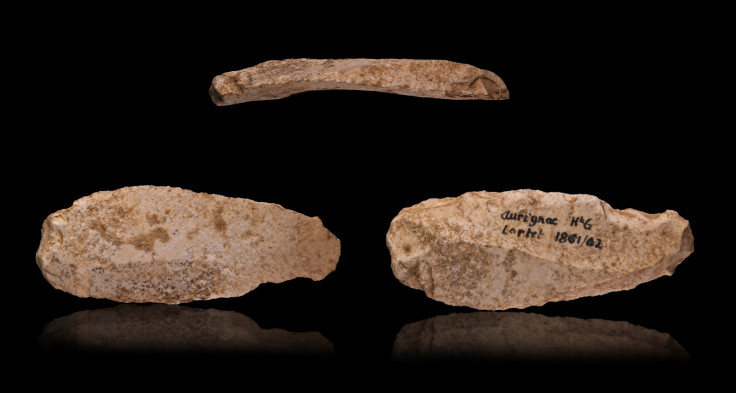Image of giant extinct aurochs found in 38,000-year-old engraving
The use of modern techniques has revealed images that the cave's 20th Century discoverers couldn't spot.
Some of the earliest prehistoric art in western Eurasia has been discovered in a limestone slab from a rock shelter in south-west France, showing an image of a large long-extinct species similar to modern cattle.
The engravings were carved 38,000 years ago by early modern humans of the Aurignacian culture. The collapsed rock shelter where they were discovered, Abri Blanchard in the Vézère Valley in Dordogne, was first excavated in the mid-20th Century. The remains of the shelter were then investigated in 2011 and the discovery of the aurochs engraving made in 2012.
The crude methods of the 20th Century archaeologists meant that much of the shelter's remains were not fully explored, Randall White of New York University, who led the 2012 excavation, writes in a paper published in the journal Quaternary International. A closer analysis of the shelter using advanced molecular techniques led to the discovery of the subtle limestone engravings.
More prominent than the faint outline of the aurochs are lines of dots carved more deeply into the limestone. Rows of dots like these have been found in Aurignacian art at other sites near Blanchard, at the Chauvet Cave in southern France, and at sites in southern Germany.
The similarities with the other European sites alongside the unique aspects of the engravings add to evidence that Aurignacian people used art and ornamentation to define their social identity from an individual to a wider community level, the study authors say.
"The discovery sheds new light on regional patterning of art and ornamentation across Europe at a time when the first modern humans to enter Europe dispersed westward and northward across the continent," White said in a statement.

The Aurignacian culture lasted from about 43,000 to 33,000 years ago in Palaeolithic Europe. In addition to their art, Aurignacian people made flint blades and tools from bone and antler.
"Following their arrival from Africa, groups of modern humans settled into western and Central Europe, showing a broad commonality in graphic expression against which more regionalised characteristics stand out," White said.
© Copyright IBTimes 2025. All rights reserved.






















